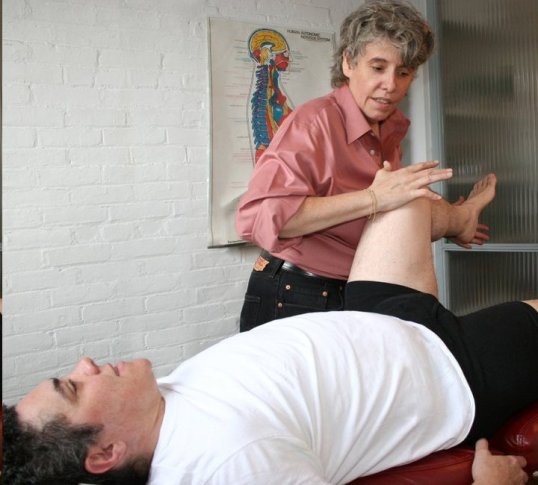As a Doctor of Chiropractic, I know that muscle balancing is an important not only for spinal adjustments but also for extremity (arms & legs) adjustments and cranial adjustments.
For example, I can adjust someone’s spine but if the pull of the muscle on one side of the spine is tighter than the other side than that spinal adjustment will not hold.
Now most people think that it’s the tight muscle that will pull the spine out of alignment but it just as often can be the weak muscle not having enough strength to hold the spine towards its side.
Also I may be treating a patient who has chronic muscle pain or weakness due to an injury; in these cases, muscle balance is very important.
In Applied Kinesiology, we have ways to strengthen or weaken a muscle depending on what we need to do to help the patient.
First we test the muscle that we think may be involved in an unbalanced pull on the bone (or spine) or involved w/ the pain or injury https://drvittoriarepetto.wordpress.com/2010/05/06/the-art-and-science-of-muscle-testing-in-applied-kinesiology/

For example, we may find the latissimus dorsi muscle weak that is a muscle that internally rotates, extends and adducts (movement towards from the body) the arm/ shoulder. It also attacts into the lumbar and sacral vertebra and part of the pelvic crest The weakness may seen either as a higher shoulder on the weak side or a rotation of the lumbar veretebrae.http://www.meddean.luc.edu/lumen/meded/grossanatomy/dissector/mml/lat.htm
The questions to be asked are: why is the muscle weak? Is the muscle on the other side hypertonic or “too stronger.”
One of the ways to find the answer is to use muscle spindle work. Muscle spindles are small sensory neuro-bundles in the middle of muscles that react to stretching. http://sports.jrank.org/pages/9926/muscle-spindle.html Stretch a muscle spindle one way and the muscle will strengthen; push the fibers of the muscle spindle the other way and the muscle will weaken.
So I would be testing the spindles by challenging the muscle spindles and seeing how it affects the strength or hypertonicity of the muscle.
I can also use another tool at an Applied Kinesiologist’s fingertips which are golgi tendon organs and as the name suggests, these are located in the tendons of muscles (tendons attach the muscle to the bones.). http://medical-dictionary.thefreedictionary.com/Golgi+tendon+organ. Again stretching the tendon organ will help strengthen the muscle and the other way will weaken it. And these would be tested in a similar manner to the muscle spindles.
© 2010-Dr. Vittoria Repetto